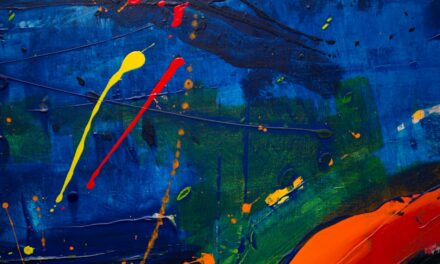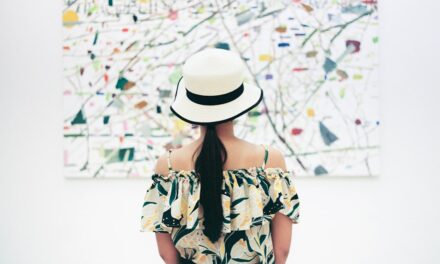Pastels, with their vibrant hues and soft textures, have captivated artists for centuries. The medium’s unique qualities allow for a range of expressive techniques, from delicate blending to bold strokes. However, the success of a pastel artwork is not solely dependent on the artist’s skill; the choice of surface plays a crucial role in the final outcome.
The right surface can enhance the vibrancy of colours, facilitate blending, and provide the necessary tooth for the pastel to adhere effectively. As such, understanding the various surfaces available for pastel work is essential for any artist looking to master this medium. In this exploration of pastel surfaces, we will delve into the characteristics of pastel paper and board, discuss how to select the most suitable surface for your artistic vision, and offer practical tips for working with these materials.
Additionally, we will touch upon alternative surfaces that can be used for pastel artwork, broadening the artist’s toolkit. By gaining insight into these aspects, artists can elevate their pastel creations and fully harness the potential of this versatile medium.
Summary
- Pastel surfaces come in various forms, including paper and board, each with its own unique characteristics and benefits.
- Understanding the differences between pastel paper and pastel board is essential for creating successful pastel artwork.
- Pastel board offers a more rigid and durable surface compared to pastel paper, allowing for more aggressive techniques and layering.
- When choosing the right surface for your artwork, consider factors such as tooth, weight, and colour to achieve the desired effect.
- Tips for working with pastel paper and board include using fixatives, experimenting with different techniques, and handling the surfaces with care to preserve the artwork.
Understanding Pastel Paper
Texture Variations
Pastel papers come in a variety of textures, from smooth to highly textured, each offering different possibilities for mark-making and blending. Smooth papers are ideal for details and precise lines, while textured papers are perfect for creating rich and soft transitions.
The Importance of Colour
The colour of pastel paper also plays a significant role in how the final artwork appears. Many artists prefer using coloured papers, as they can serve as a mid-tone that enhances the vibrancy of the pastels applied on top. For instance, a warm-toned paper can make cool pastels pop, while a cool-toned paper can create a harmonious backdrop for warmer shades.
Durability and Weight
Additionally, some pastel papers are designed with a specific weight and thickness that can withstand multiple layers of application without buckling or tearing, making them suitable for more extensive works.
Exploring Pastel Board
Pastel board is another popular surface choice among pastel artists. Unlike paper, which can be more delicate and prone to damage, pastel boards are typically made from a sturdy substrate that provides a solid foundation for artwork. These boards are often coated with a textured surface that mimics the tooth of pastel paper, allowing for excellent adhesion of pastel pigments.
The durability of pastel boards makes them an attractive option for artists who prefer to work with heavier applications of pastel or who wish to transport their artwork without fear of damage. One of the advantages of using pastel board is its versatility in terms of size and shape. Artists can find boards in various dimensions, from small panels suitable for studies to large formats ideal for expansive landscapes or portraits.
This adaptability makes pastel boards an excellent choice for both beginners and seasoned artists looking to expand their creative possibilities.
Choosing the Right Surface for Your Artwork
Selecting the appropriate surface for your pastel artwork is a decision that should be made with careful consideration of your artistic goals and techniques. Factors such as texture, colour, and weight all play a significant role in how your pastels will perform on a given surface. For instance, if you are aiming for intricate details and fine lines, a smooth pastel paper may be your best bet.
Conversely, if you wish to create bold strokes and rich layers, a heavily textured paper or board would be more suitable. Moreover, it is essential to consider the subject matter of your artwork when choosing a surface. A landscape painting may benefit from a textured surface that allows for soft blending of colours, while a portrait might require a smoother finish to capture delicate facial features accurately.
Additionally, experimenting with different surfaces can lead to unexpected results and inspire new techniques. Therefore, artists should not hesitate to try various options until they find the perfect match for their style and vision.
Tips for Working with Pastel Paper and Board
When working with pastel paper and board, there are several techniques and tips that can enhance your experience and results. Firstly, it is advisable to start with light layers of pastel before gradually building up darker tones. This approach not only helps in achieving depth but also allows for easier blending and layering without overwhelming the surface.
Additionally, using a variety of pastel types—such as soft pastels for vibrant colour application and hard pastels for fine details—can add dimension to your work. Another important tip is to keep your hands clean while working with pastels. The oils from your skin can transfer onto the surface and affect how the pastels adhere or blend.
Using gloves or regularly cleaning your hands can help maintain the integrity of your artwork. Furthermore, consider using fixatives sparingly; while they can help set your work and prevent smudging, overuse can dull the vibrancy of colours. Instead, allow your artwork to breathe by using fixatives only when necessary.
Maintaining and Preserving Pastel Artwork on Paper and Board
Preserving pastel artwork is crucial to ensure its longevity and vibrancy over time.
When framing your artwork, opt for glass or acrylic that offers UV protection to shield it from harmful light exposure.
Additionally, using acid-free materials in your framing process will prevent discolouration and degradation of both the artwork and its surrounding materials. For artworks created on paper, it is advisable to store them flat in a protective sleeve or portfolio to prevent creasing or damage from moisture. If you must stack multiple pieces together, interleave them with sheets of glassine or another non-stick material to avoid direct contact between surfaces.
For pastel boards, ensure they are stored upright in a safe location where they will not be subjected to pressure or impact that could cause damage.
Alternative Surfaces for Pastel Artwork
While pastel paper and board are the most common surfaces used by artists, there are numerous alternative surfaces that can yield exciting results. For instance, canvas can be an intriguing option; when prepared correctly with an appropriate ground or texture, it can provide a unique backdrop for pastel work. The absorbent nature of certain canvases allows pastels to adhere well while also enabling interesting blending techniques.
Another alternative is wood panels, which offer a sturdy base that can withstand heavy applications of pastel without warping or buckling. Artists may also experiment with unconventional surfaces such as cardboard or even fabric; these materials can introduce unexpected textures and effects that challenge traditional approaches to pastel art. By exploring these alternatives, artists can push the boundaries of their creativity and discover new ways to express their artistic vision.
Enhancing Your Pastel Art with the Right Surface
In conclusion, the choice of surface is paramount in creating successful pastel artworks. Understanding the characteristics of various surfaces—be it paper or board—enables artists to make informed decisions that align with their artistic intentions. By selecting the right surface based on texture, colour, and durability, artists can enhance their ability to manipulate pastels effectively and achieve their desired outcomes.
Moreover, by incorporating tips for working with pastels and maintaining artwork over time, artists can ensure that their creations remain vibrant and intact for years to come. As they explore alternative surfaces beyond traditional options, they open themselves up to new possibilities that can invigorate their practice. Ultimately, investing time in understanding and experimenting with different surfaces will undoubtedly enrich an artist’s journey with pastels, leading to more dynamic and expressive works of art.
If you are interested in exploring different art techniques, you may want to read the article “Dry Brush Technique in Oil: Textural Effects”. This article delves into the unique method of using a dry brush to create interesting textures in oil paintings. It provides a detailed explanation of how to achieve this effect and the visual impact it can have on your artwork. It is a fascinating read for artists looking to experiment with new techniques and add depth to their work.


